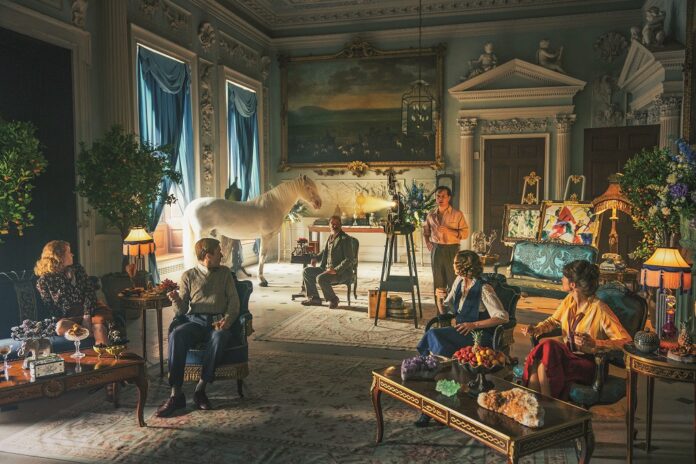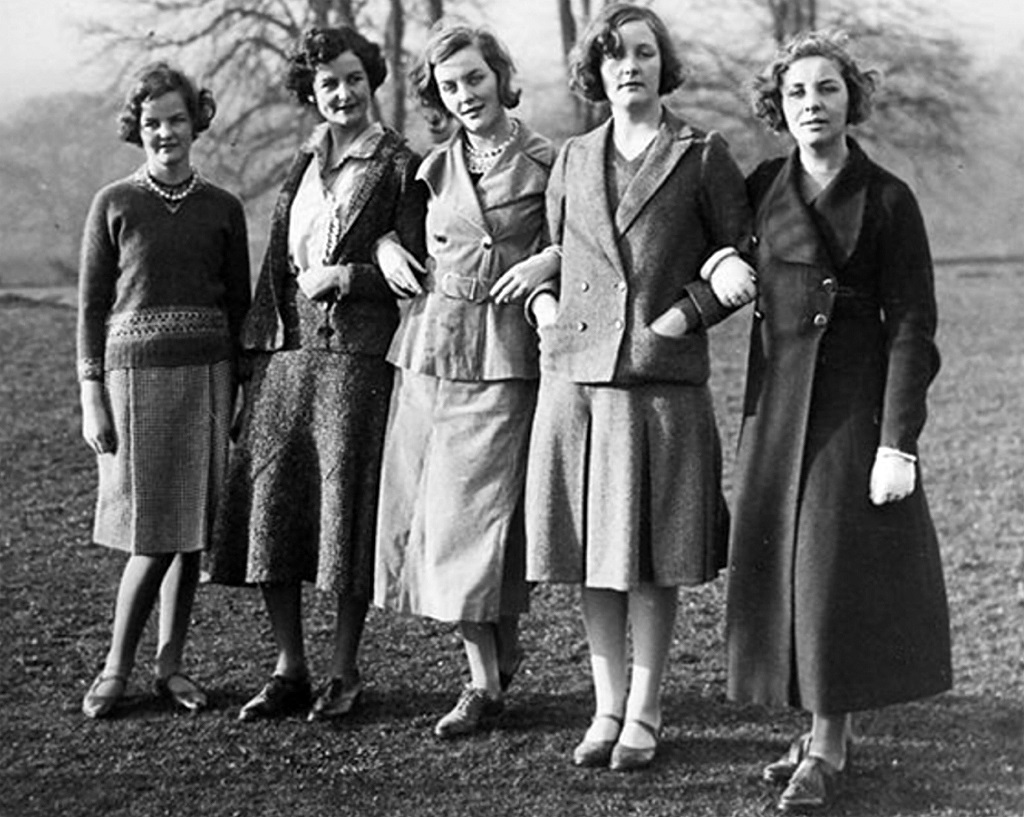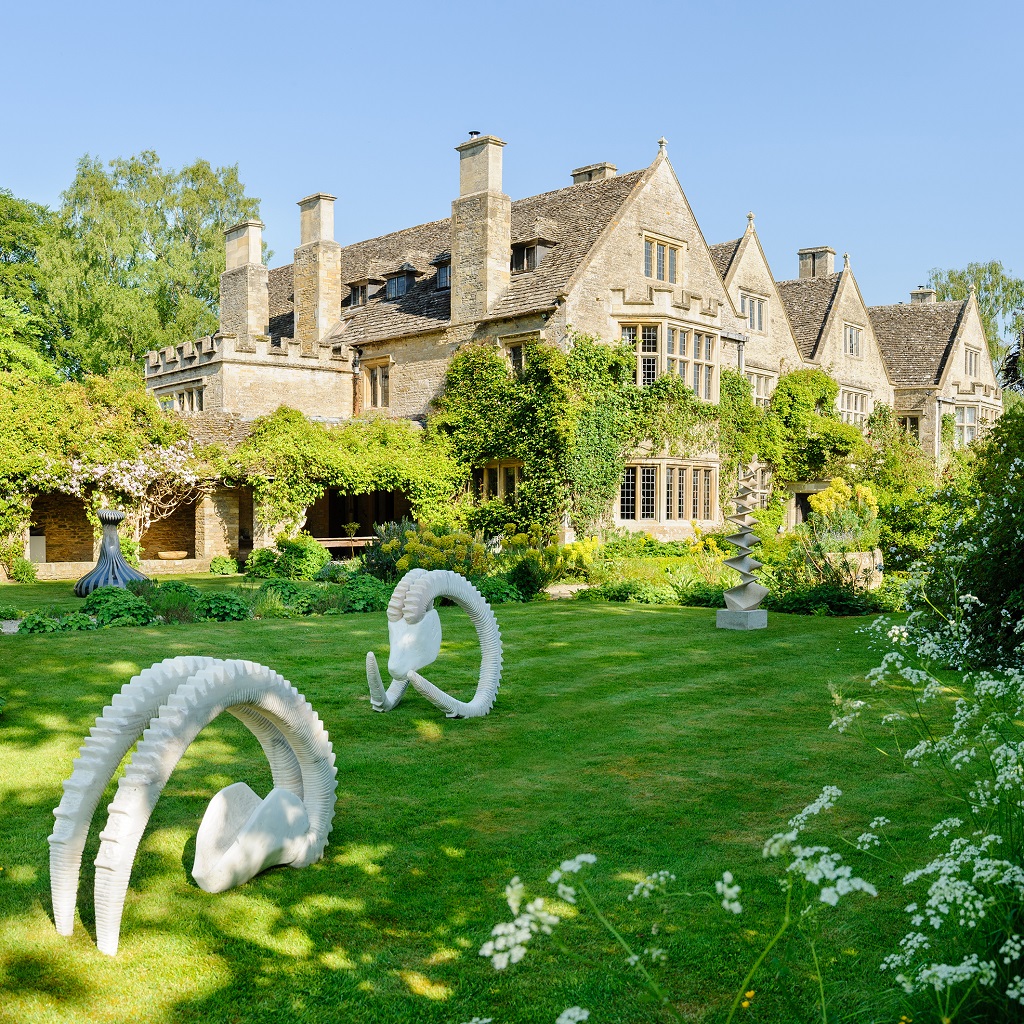
A new TV adaptation of The Pursuit of Love, Nancy Mitford’s novel based on her eccentric family, puts the lives of her infamous sisters in the spotlight once again
It’s not hard to understand why the world is so fascinated by the Mitfords. Novelist, Nazi and fascist; communist, country girl and Duchess: these six sisters have life stories so full of drama and scandal they simply beg to be given such sensationalist labels.
Born between 1904 and 1920, Nancy, Pamela, Diana, Unity, Jessica and Deborah hailed from a quiet corner of the Cotswolds, the daughters of David, 2nd Baron Redesdale, and his wife Sydney, who also had a son, Tom. They were Hons (entitled to use ‘The Honourable’ before their name) by accident – only after his older brother was killed during the First World War did David become heir to his title – but it was their unconventional upbringing that turned them into rebels, intent on individuality. ‘Farve’ (as they called Lord Redesdale) was certain that sending girls to school was a frivolous waste of money – and fearful, besides, that hockey would give them thick calves – so a succession of governesses provided the bulk of their education, one memorably teaching her charges to shoplift.
Since few outsiders made it past the gate post – Lord Redesdale disliking almost ‘the whole teeming population of the earth’s surface,’ according to Jessica, ‘except, for some, though not all, of our relations and a very few tweeded, red-faced country neighbours’ – the sisters were largely reliant on each other for company.

Theirs was a world Nancy went on to immortalise in her best-known novel, The Pursuit of Love, now on screen in a new BBC adaptation. Alconleigh, the home of her fictional Radlett family (modelled on the Mitfords) was essentially Asthall Manor – a Jacobean manor of pale Cotswold stone, purchased as a stop-gap after Lord Redesdale was forced to sell Batsford Park, his ancestral home, but in which Nancy ended up spending all her teenage years. In appearance, though, Alconleigh – ‘as grim and as bare as a barracks’ – owes more to Swinbrook House, built to Lord Redesdale’s specification, but to which his wife and daughters (who christened it ‘Swine-brook’) moved reluctantly in 1926.
With his quick temper and habit of hunting his children with a bloodhound, ‘Farve’ looms large in Pursuit in the guise of the eccentric Uncle Matthew. As do various Mitford childhood memories: from the secret society headquartered in the linen cupboard, to the springing of the gamekeeper’s steel traps.

Indeed, so vivid is the portrait – ‘so adept’ was Nancy, says biographer Mary S Lovell, ‘at recycling her own experiences’ – that the lines between fact and fiction became indistinct, the novel laying the foundations for the modern-day Mitford legend.
But the sisters were grabbing attention long before it hit the shelves in 1945. ‘Whenever I read the words “Peer’s Daughter” in a headline,’ Lady Redesdale once sighed, ‘I know it’s going to be something about one of you children.’ Usually, one of her youngest girls. Nancy – who partied with the Bright Young Things and made an ill-fated marriage before embarking on her literary career (and a love affair with Frenchman Gaston Palewski) – and Pamela – who favoured a quiet, countryside existence – were spectacularly overshadowed by their siblings.
In 1929, 18-year-old Diana married Bryan Guinness, heir to the brewing fortune, but scandalised society three years later when she embarked on an intense affair with Sir Oswald Mosley, the married leader of the British Union of Fascists. Her parents were dismayed when she left Guinness for her increasingly high-profile lover, living openly as his mistress until 1936 when the couple wed in Germany, the ceremony held in the apartment of prominent Nazi Joseph Goebbels, with Hitler guest of honour.





 © 2024
© 2024